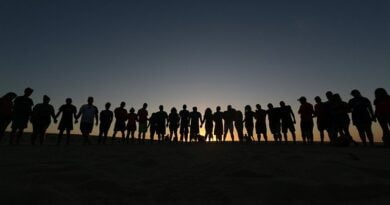Bomb Cyclone
Context:
Bomb cyclone hits eastern U.S., triggers transport chaos, outages
Bomb cyclone/ Bombogenesis
It is the rapid deepening of an extratropical cyclonic low-pressure area. The change in pressure needed to classify something as explosive cyclogenesis is latitude dependent. For example, at 60° latitude, explosive cyclogenesis occurs if the central pressure decreases by 24 mbar (hPa) or more in 24 hours. This is a predominantly maritime, winter event, but also occurs in continental settings, even in the summer. This process is the extratropical equivalent of the tropical rapid deepening. Although their cyclogenesis is entirely different from that of tropical cyclones, bomb cyclones can produce winds of 74 to 95 mph (120 to 155 km/h), the same order as the first categories of the Saffir-Simpson scale, and yield heavy precipitation. Even though only a minority of the bombs become so strong, some weaker ones have also caused significant damage.
This can happen when a cold air mass collides with a warm air mass, such as air over warm ocean waters. The formation of this rapidly strengthening weather system is a process called bombogenesis, which creates what is known as a bomb cyclone.
In the 1940s, some meteorologists began informally calling some big coastal storms “bombs” because they develop “with a ferocity we rarely, if ever, see over land.
There are other factors in play as well such as:
- Deep tropospheric frontogenic processes which occur both during upstream and downstream of the cyclon’s surface
- Influence of air-sea interaction
- Latent heat release
In which region does a Bomb Cyclone occur?
There are four active regions which are hot spots for Bomb Cyclone:
- The Northwest Pacific
- The Northern region of the Atlantic Ocean
- The Southwest Pacific
- The Southern region of the Atlantic Ocean.
About Cyclone:
- Cyclones are rapid inward air circulation around a low-pressure area. The air circulates in an anticlockwise direction in the Northern hemisphere and clockwise in the Southern hemisphere.
- Cyclones are usually accompanied by violent storms and bad weather.
- The word Cyclone is derived from the Greek word Cyclos meaning the coils of a snake. It was coined by Henry Peddington because the tropical storms in the Bay of Bengal and the Arabian Sea appear like coiled serpents of the sea.
Types of Cyclone
There are various types of cyclones depending on the type of prevailing low-pressure system.
- Tropical cyclone
- Extratropical cyclone
- Tornadoes
Cyclones are not only present on Earth but also spotted on other planets like Mars, Jupiter, and Neptune. The Great Red Spot is the hurricane on Jupiter which is going on from 340 years. Great Black Spot was spotted in the Southern Hemisphere of Neptune.
How is a Cyclone formed?
When it comes to the formation or strengthening of a cyclone, Cyclogenesis plays a crucial role. It is an umbrella term to identify several different processes that result in a cyclone. Tropical cyclones are formed over warm ocean water near the equator. Warm moist air near the surface of the ocean rises upwards. This creates a low-pressure area near the surface. This results in the movement of cooler air from surrounding areas into the low-pressure area. Now even this cool air becomes warm and moist and rises up. The above cycle keeps continuing. The warm moist air which rises up, cools the water in the air, resulting in the formation of clouds. This whole system of clouds and winds spins and grows. This entire cycle continues resulting in a cyclone. When the winds reach a speed of 63 mph, it is called a tropical storm, when the winds reach a speed of 119 kmph it is called a tropical cyclone or hurricane.
The Government of India has initiated
The National Cyclone Risk Mitigation Project (NCRMP) with a view to address cyclone risks in the country. The overall objective of the Project is to undertake suitable structural and non-structural measures to mitigate the effects of cyclones in the coastal states and UTs of India. NDMA under the aegis of Ministry of Home Affairs (MHA) is implementing the Project in coordination with participating State Governments and the National Institute for Disaster Management (NIDM).The Project has identified 13 cyclone prone States and Union Territories (UTs), with varying levels of vulnerability.
The main objective of the NCRMP is to reduce vulnerability of coastal communities to cyclone and other hydro meteorological hazards through;
- Improved early warning dissemination systems
- Enhanced capacity of local communities to respond to disasters
- Improved access to emergency shelter, evacuation, and protection against wind storms, flooding and storm surge in high areas
- Strengthening DRM capacity at central, state and local levels in order to enable mainstreaming of risk mitigation measures into the overall development agenda
Source: The Hindu
You can find many articles on GEOGRAPHY (part of GS I) in our website. Go through these articles share with your friends and post your views in comment section.



